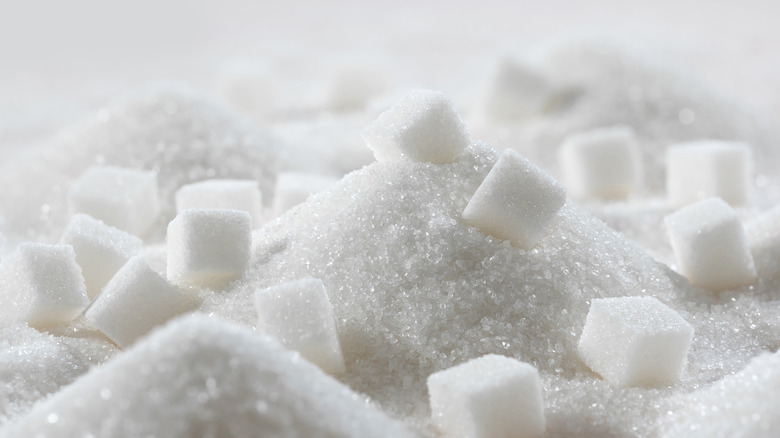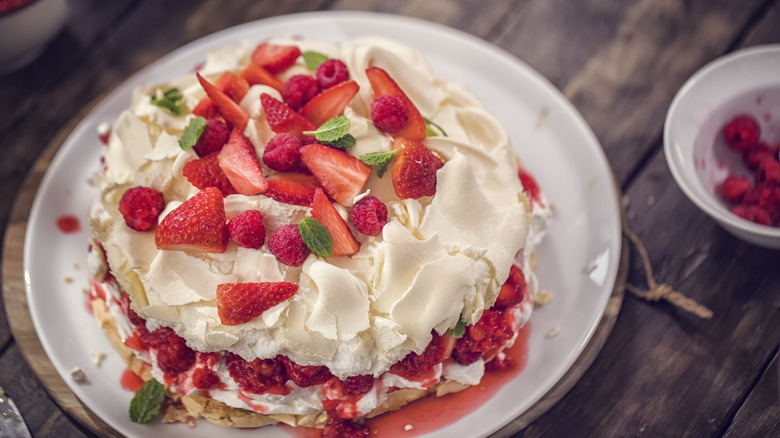Being Out Of Caster Sugar Doesn't Mean You're Out Of Luck
You would think that sugar is fairly ubiquitous in any country, but there are nuances. For example, palm sugar and coconut sugar are widely available in South East Asia and South India, but if you are looking for them in other countries, you need to head to a specialty store. Similarly, caster sugar is often used in baking and dessert-making in many countries, but interestingly, it is not the go-to sugar in American recipes. It can be found in the baking aisles in American supermarkets, but in smaller packs compared to "regular" granulated sugar.
Deep-diving into this for a moment, caster sugar is also known as superfine sugar or baker's sugar. It is a type of granulated sugar with a finer texture compared to granulated sugar but is not as fine as powdered sugar. Caster sugar is commonly used in desserts like soufflés, especially where there are elements of whisking or beating because its smaller crystals dissolve quickly and create a smooth texture.
So if you're trying to follow a recipe from a British pastry chef, for example, your lack of caster sugar might initially stump you. But don't worry, there are a few ways you can either make your own caster sugar or substitute it using sugar you may already have in your pantry.
The easiest way to make caster sugar is to grind granulated sugar
Before you make your own caster sugar or find a substitute, consider if the recipe really needs it. Granulated sugar is coarser and grainier but if you're making standard brownies or cakes, this may not have any discerning effects. Similarly, if you're making sugar syrup, compote, or jam, the heat and stirring effect will help dissolve the granulated sugar, albeit with additional time and effort. There may be no real need for caster sugar.
However, if you're making delicate desserts like meringues, you will need caster sugar so that the final product is light and smooth rather than grainy. Since caster sugar is made by mass-processing granulated sugar into smaller particles, the easiest way to emulate this process at home is to take granulated sugar and pulse it in a food processor or spice grinder until it becomes finer. Be cautious not to over-process it, as you can turn it into powdered sugar.
You can substitute caster sugar with powdered sugar, with some caution
Powdered sugar, also known as confectioner's sugar or icing sugar, is another viable substitute for caster sugar. As mentioned above, powdered sugar has finer granules compared to caster sugar so it will easily dissolve in batter or drinks. In terms of taste, it is similar to granulated sugar and caster sugar, so it can be substituted using a 1:1 ratio. However, powdered sugar contains a small amount of cornstarch to prevent clumping, which might affect the texture of your final product.
Now that you have caster sugar or its substitute, do not waste it on run-of-the-mill desserts. Experiment with airy desserts like mousse and whipped cream or light cakes like an Italian-style lemon mascarpone cake. Remember that baking is really a science rather than an art form, so when you substitute sugars in baking recipes, the final result may differ slightly from the originally intended outcome.
But that's what kitchen experiments are like anyway.


